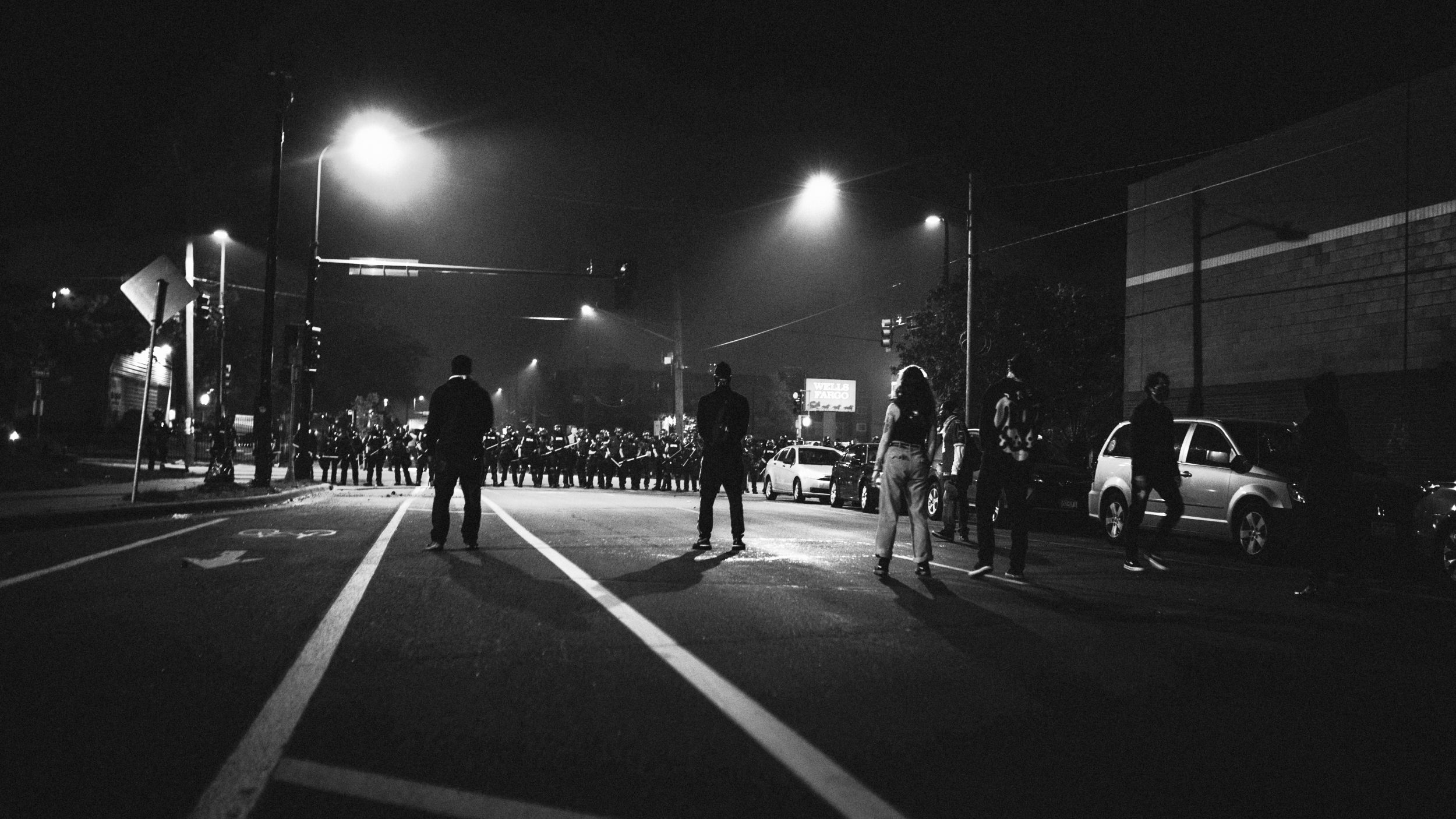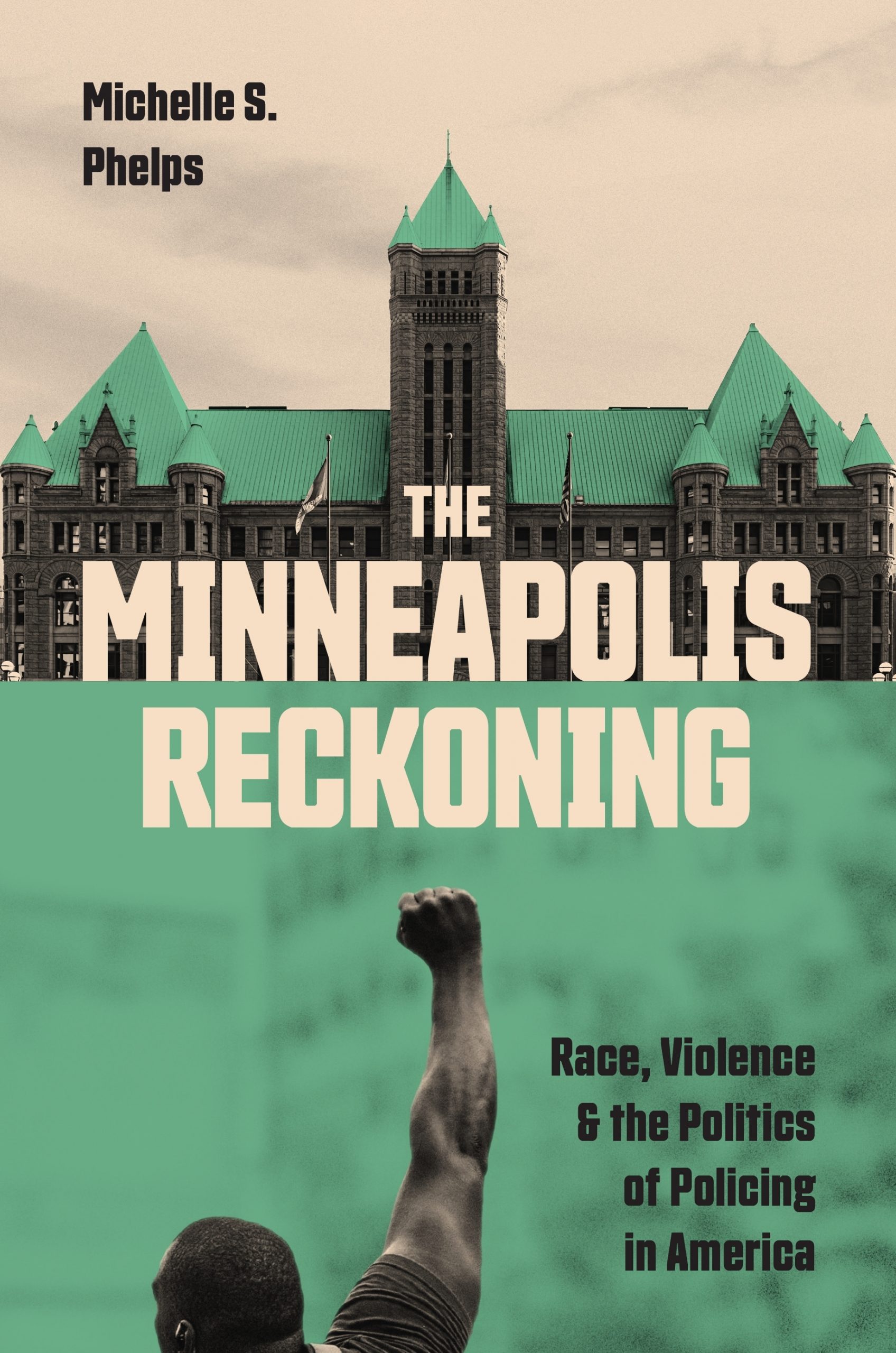After George Floyd’s murder in 2020, Minneapolis engaged in a high-profile effort to explore alternatives to policing. Few who watched this unfold on the national stage realized, though, that efforts to change Minneapolis’s public safety systems had already been underway for years.
For example, one of the major victories of the city council in 2020 was wresting a small amount of funding away from the Minneapolis Police Department (MPD) to invest in a new model for responding to mental and behavioral health crises. This was the fruit of a project that had begun in 2018, after the city council tasked staff with researching alternative public safety responses. Created in the wake of the police killings of Jamar Clark and Justine Damond, under the newly progressive city council elected in 2017, this work group was tasked with developing unarmed alternative responses to 911 calls to reduce the number of officer–citizen contacts across the city.
By 2021 the team tasked with developing alternative response models in Minneapolis had successfully implemented some of their proposals, including shifting some non-urgent 911 calls to the city’s 311 line, civilian staff, and online reports. The most consequential pilot that emerged was a new approach to people experiencing mental and behavioral health crises in the city. Rather than a co-responder model, which pairs police with a mental health professional, this new team would deploy only mental health professionals in response to 911 calls for behavioral crises. And they would have plenty of calls: As a 2022 police staffing report showed, fully a quarter of 911 calls dispatched to the MPD in 2020 might have instead been routed to alternative responders, including the nearly 10 percent of all 911 calls that evaluators categorized as behavioral health issues.
The city decided it would contract out this work to a mental health provider rather than building capacity in-house. The contract went to Canopy Mental Health and Consulting, a Black-owned business from nearby Richfield, Minnesota, that provided community-based mental health services and would develop their Canopy Roots program to build a new model of crisis response. The Behavioral Crisis Response (BCR) teams initially consisted of two mobile units (each staffed by two responders), operating from 7:30 a.m. to midnight, Monday through Friday, throughout the city of Minneapolis. Soon, they expanded to twenty-four-hour weekday operation, adding partial weekend coverage by summer 2022.
Even with a nearly full-time schedule, the BCR was tiny in scale compared to the MPD. But the goal of the pilot was to demonstrate its safety and utility, something that could be done on a small scale and still have a big impact. BCR crews wore official city gear—with blue hats, shirts, and jackets identifying them as the “BEHAVIORAL CRISIS RESPONSE.” Their vans were also marked as property of the City of Minneapolis and Canopy Roots. The vans did not, however, have bright lights or sirens, a choice meant to avoid escalating situations (with the built-in limit of slowing response times).
City council members eagerly spread the word in their newsletters to residents, though it was still unclear what exactly constituted a behavioral crisis that would summon the BCR and what kinds of services or referrals the emergency responders would be able to offer people in crisis beyond the initial response. What was clear from the first brochures was that the BCR team was not to be dispatched to any call involving a firearm or “violent behavior” (a limitation tied to state law) and that, should a weapon and/or threat of violence emerge during a BCR call, the responders would call for police backup.
In spring 2022 I reached out to the Office of Performance and Innovation and Canopy Roots to learn how the pilot was going. Candace Hanson, Canopy Roots’s owner, reported that the teams were up and running. A typical call was a welfare check request from a loved one or neighbor, though some people in crisis called in themselves. Roughly half of the calls, she estimated, involved people who were unhoused. And most calls involved counseling people on the resources available to them and, in some cases, transporting people to care.
The response from MPD officers was, perhaps surprisingly, very enthusiastic. A BCR responder I spoke to referred to officers as “our biggest fans,” noting that officers understood and respected the BCR team’s ability to more effectively deescalate and address behavioral crises. Hanson also reported that her team members had not been pressured to criminalize behavior in the community—other than imminent threat of bodily harm, there was no push to call in law enforcement.
Decarceral thinkers and doers
Every week, Inquest aims to bring you insights from people thinking through and working for a world without mass incarceration.
Sign up for our newsletter for the latest.
Newsletter
Despite their professional camaraderie, BCR staff members are not cops. They approach situations without officers’ need for control, allowing them to calm and deescalate tensions more effectively. This power difference is conveyed visually, too, with the BCR’s more casual uniform and the demographics of the staff; unlike the police force, which is majority white and male, the majority of the BCR’s trained staff are people of color and/or women, nonbinary, or transgender. However, BCR staff have little power beyond persuasion, which means that they sometimes leave situations without any redress and in other cases have to call in police.
In April 2022 the Office of Performance and Innovation presented at the Public Health and Safety Committee, reporting that, in just over three months of operation, BCR staff had responded to roughly a hundred calls per week. This tally was already outpacing the number of person-in-crisis calls that were being dispatched to the MPD. Roughly one in ten of the calls the BCR responded to originated with the MPD requesting their assistance. With a van in each of the city’s five precincts, staff argued, the BCR could more effectively handle a higher call volume with better results. Operating at scale, and with more assurance that callers would get a BCR response, there was hope that more callers might lean on 911 to get more proactive mental health assistance in moments of crisis, too. Gina Obiri, a program manager for the city, summarized: “Our city is reimagining public safety, not just in theory, but practice,” while a BCR staffer lauded, “Every city needs it.”
Simply responding to these calls with mental health professionals instead of police is a victory; it reduces police–citizen contact, minimizing the risk of citation or arrest for low-level offenses and thus improving public safety. And it can reduce the routine forms of police surveillance, harassment, and use of force that people with behavioral health issues all too often confront.
What is less clear is whether or how much the BCR program can reduce lethal police violence, the original impetus for the pilot. The need for interventions for people in a mental health crisis is clear—estimates suggest that roughly a quarter of people killed by police across the country have a history of mental illness. Yet in the vast majority of these cases, persons both with and without a history of mental illness were armed with some kind of weapon. These calls would thus be ineligible for a BCR-first response. The worrying implication is that changing the first responders will not reduce lethal police violence if they are prevented from responding to calls involving weapons or the threat of violence.
In the end, my best guess is that the BCR will prove to be a critically important solution to social problems, including the criminalization of poverty and the more frequent, less lethal forms of police violence, such as “take-downs” of people with behavioral health issues. It also might improve mental health care for the most vulnerable members of the public. But the BCR, and this category of intervention more broadly, seem less likely to substantially reduce the number of people killed by police on their own.
At the same time that the city was developing the BCR program, neighborhoods began to experiment with their own community-led safety initiatives. One such model was an abolitionist collective that developed a radical emergency hotline. Their work began during the uprising, as long-time local organizers Jason Sole and Signe Harriday started responding to the urgent demands for help coming from community members.
The “new normal” following the unrest saw many mutual aid projects fizzle out, but Sole and Harriday’s work instead expanded. Growing their core team to include Rox Anderson, Josina Manu Maltzman, and Susan Raffo, the new collective named itself Relationships Evolving Possibilities (REP), identifying as an abolitionist experiment to build an “interconnected ecosystem of projects and resources that build the conditions for safety, freedom, and dignity in our communities” outside of the violence of racial capitalism. The project had several components, each with the acronym “REP,” including the “radical ecosystem pods,” or community groups that built neighborhood capacity by working and training together, and “revolutionary emergency partners,” a hotline designed to “provide emergency care to community members” by trained volunteers.
Unlike many staff-run programs, REP was designed to rely on ordinary residents and build community networks of solidarity. The experiment had some paid project managers, but the people who responded to calls were not “on the job”—they were community members responding to their neighbors to provide mutual aid, or loving care. REP used donations and foundation grants to provide stipends for these volunteers’ training, which involved completing seven ten-hour training sessions, which REP describes as “studios.” Led by their five core team members, the studios cover the daily work of the hotline—including training and scenario role-playing on mental health first aid, deescalation tactics, cop watching, and use of the team’s technology systems—as well as the history and philosophy of REP and legal guidance on the bounds of its work.
Any funding for REP, its organizers promised, would have to come without strings; REP would not be caged by city money or city agencies. Operating independently allowed the REP hotline to eschew all contact with the police, unlike the violence interruption programs organized through the city’s Office of Violence Prevention. REP could stand true to its abolitionist principles, providing emergency response with no risk of police involvement. REP would allow people to call “each other, other abolitionists” and engage in “radical consent,” meaning that the caller would decide what kind of response from REP (or other services) they wanted.
The hotline went active in summer 2021, initially responding to calls on Friday evenings (7 p.m. to midnight). Though the first call they answered was in North Minneapolis, the project had no firm geographical boundaries, and it took calls from across the Twin Cities. REP directs community members to call the hotline for things like noise complaints, mental health crises, neighbor disputes, and conflict deescalation, but not acute medical crises or in-progress theft or violence (though REP envisions these as potential growth areas after the pilot phase). The hotline response teams consist of three REP members: a community resourcer—the call-taker who handles the emergency response line, linking people to resources and (where appropriate) dispatching a response—and the response team, consisting of a driver and a CARER (“Community Aid, Resourcing, and Emergency Response”) who takes the lead at the scene.
Building REP has been enormously hard work, requiring coordinating a large team of volunteers to run an ambitious experiment in safety. To staff the line, REP had, by spring 2022, in addition to the five core team members, several project managers and roughly twenty trained CARERs. But the scale of aid directly provided by the hotline was still limited, operating on Friday and Saturday evenings, with periodic pauses to regroup and build capacity. During an interview in April 2022, Sole told me that over a recent weekend, the line received five or six calls, with half dispatched to an on-site team. The kinds of calls REP received were varied, including medical crises where community members wanted someone on the line with them while they waited for an ambulance; disputes among friends, partners, and neighbors; and mental health crises.
REP’s goal was not to take over all 911 calls in the city (or region) single-handedly, but to propel forward that broader ecosystem of radical organizers and organizations through its trainings, the pods, and a political education campaign on the promises of abolition. As Harriday described in a March 2022 podcast, REP’s greatest achievement wasn’t to be measured in the number of calls answered but by its contributions to radical imagination: “We’re not trying to abolish emergency response. We’re trying to create new imaginations of what that looks like.” The goal, as Sole told a VICE reporter in winter 2021, was to see “more groups showing up in a REP kind of way” to provide safety for their own communities. Both pushed back against putting REP in a box or on a pedestal—REP wasn’t “the” answer to the problem, because there was no one right answer. Instead, REP was one of hopefully many attempts to put Black liberation philosophy into practice, sparking further radical possibilities for real safety.
By growing radical imagination and moving the public away from the deeply entrenched belief that police should be the catch-all managers of public safety, both the BCR and REP have the potential to reduce police power and expand public safety. Yet it is important to be clear-eyed that changing the types of city-led services that respond to emergencies is unlikely in of itself to radically transform racialized inequality or the crises it engenders. Sending mental health professionals in response to 911 calls about persons in distress or violence interrupters to violence-plagued corners, for example, does little to address the underlying causes of those social problems.
Many abolitionists see this as one of the limits of state-led public safety initiatives and tell us instead to turn toward building community solidarity, including through mutual aid efforts. The REP hotline provides a clear example of trying to put this set of ideas into practice, operating (not coincidentally) outside the confines of city governance. Yet by operating independently, REP necessarily limited its scale and scope. It remains to be seen how such efforts can diffuse and scale up untouched by mainstream political institutions.
Perhaps more fundamentally, if the problem of police violence goes so much deeper than policing—to the foundational race and class cleavages in the United States—then so too must its solution. Simply changing who responds might reduce the harms of violence, but it will not resolve the underlying structural tensions. To impact deeper changes, cities need structural solutions to what are clearly structural problems.
Excerpted from The Minneapolis Reckoning: Race, Violence, and the Politics of Policing in America by Michelle S. Phelps. Copyright © 2024 by Princeton University Press. Reprinted by permission.
Image: Josh Hild/Unsplash


